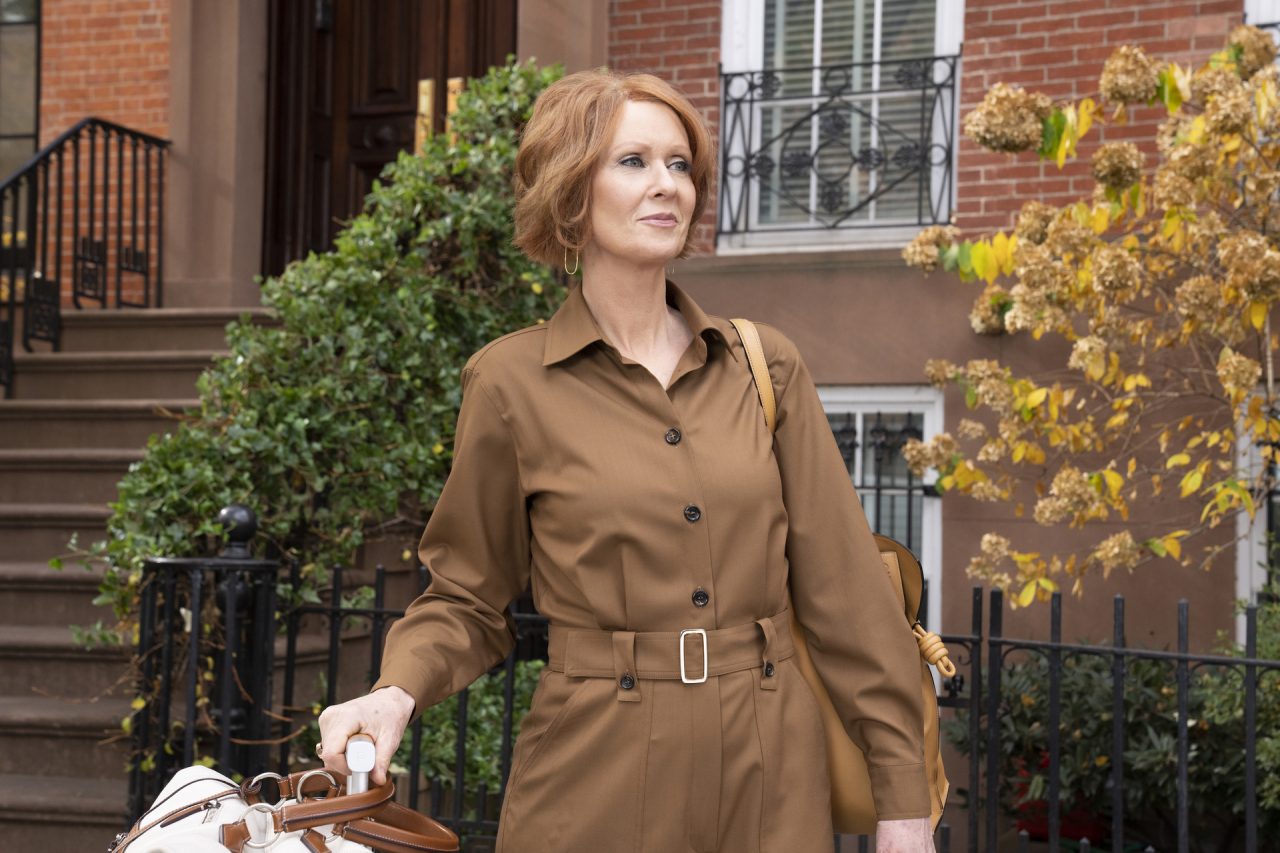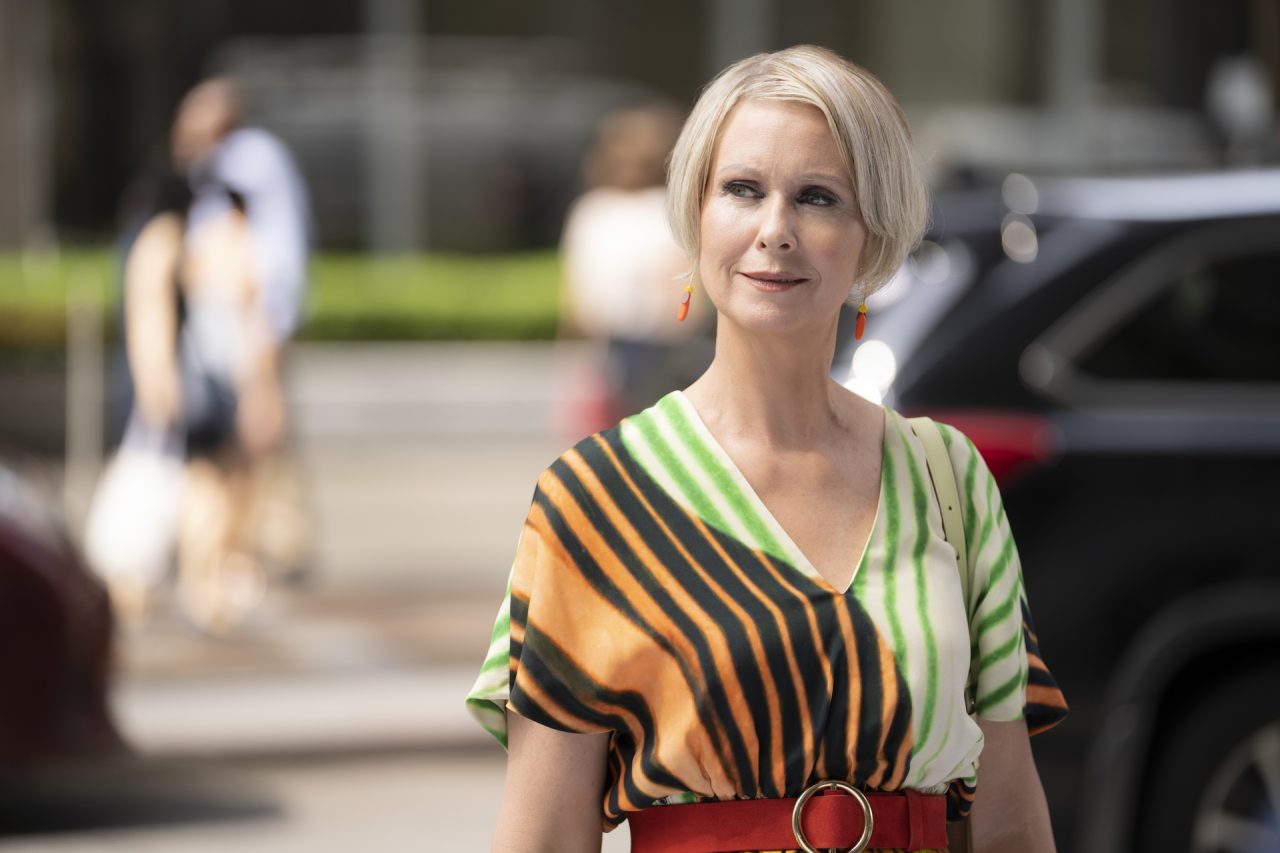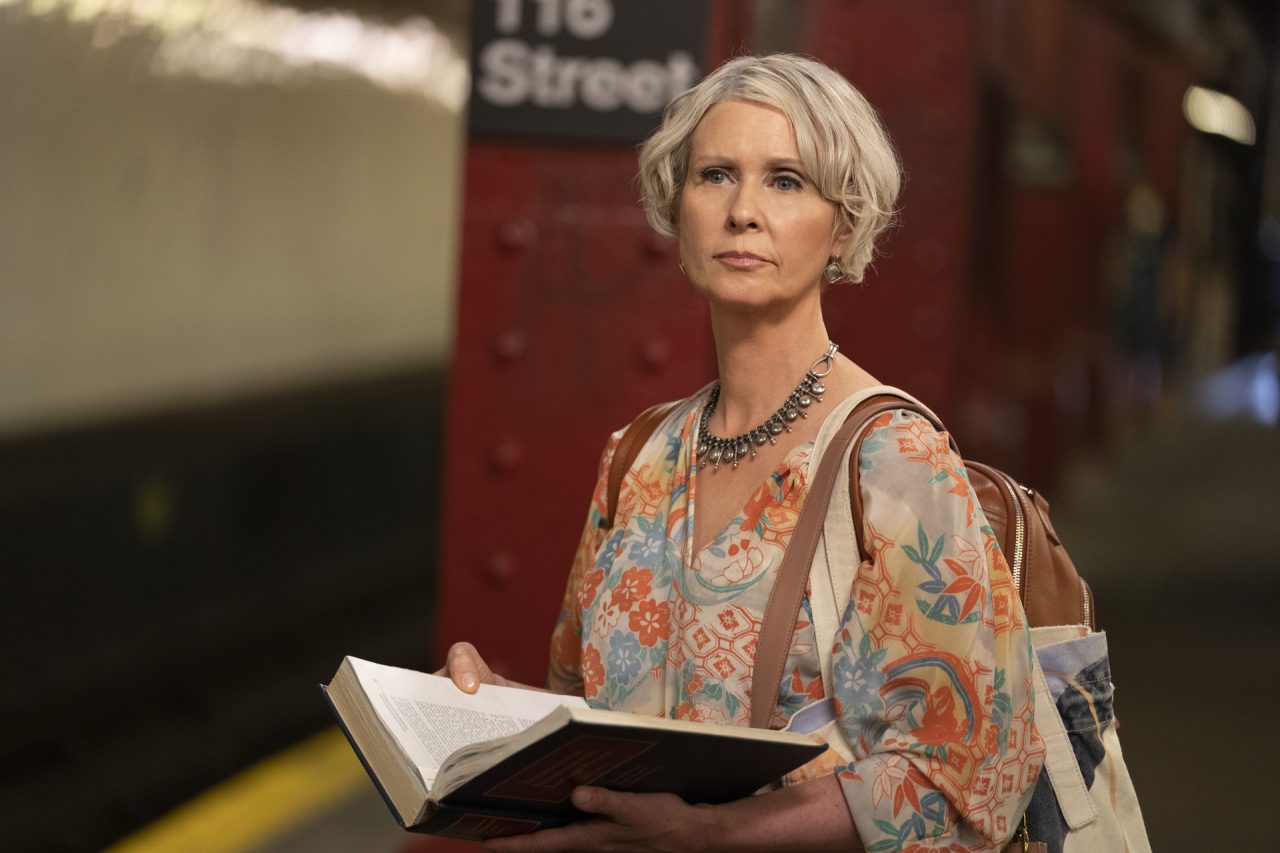

Miranda Hobbes is a redhead again. In the final moments of this week’s season finale of And Just Like That, the character ended her controversial journey in front of her Brooklyn brownstone, sparring with her son Brady as both set out on new off-screen adventures. He’s headed off to…um, I want to say the Peace Corps? Or maybe Habitat for Humanity? Meanwhile, in contrast, she’s going to Los Angeles where she will spend the next few months just hanging out while Che films their TV pilot. And to celebrate, she’s dyed her hair red again.
“So, are you ever going to say anything about my hair?” she needles Brady, notably not insisting that they discuss how he feels about the major upheaval she has instigated in their family life by leaving Steve for a nonbinary comedian. (Do the Brady-Hobbeses all still live together? How is Brady handling his parents separating for the second time? What is going on? Why is this show so disinterested in the complicated dynamics of this significant uncoupling? Why?)
His response is typically flippant—though one detects an undertone of resentment in Niall Cunningham’s delivery: “What happened to all the gray pride?”
Yeah, Miranda? What happened to…that? And to…you?

So, you all remember that before this Sex and the City revival ever premiered on HBO Max, I had some thoughts about Miranda’s gray hair, mainly having to do with the visual trope of a blonde, a brunette and a red head, and trinities of female archetypes. Two months later, having lived through Miranda’s “drinking problem,” her mid-life crisis, her various supposed sexual and political awakenings, her silvery mauve wig, I have yet more thoughts re: the character’s hair. Spoiler: It’s not really about the hair.
“I just felt like changing it up again.” That’s the sum total of Miranda’s explanation of why, after so aggressively defending her decision to allow her hair to go gray in the premiere, she’s decided to dye it again. Nothing to do with dating a younger person. Nothing to do with the implications of the “non-traditional” relationship Che is offering her and the potential insecurity that might trigger. Nothing to do with her growing awareness of the inevitability of death and the existential emptiness of the life she’s spent shopping and brunching when not defending the interests of corporations. Nothing to do with any of that.
For a show that is so preoccupied with personal style and is usually so good at conveying character development through aesthetic choices, And Just Like That left us with a lot of mixed messages vis-a-vis Miranda. Her arch this season from newly activated progressive champion to lovestruck girlfriend has been incredibly frustrating, largely because the show hasn’t been clear about how we, as an audience are supposed to feel about it. Or, rather, the show’s apparent assertion that the character is exhibiting positive personal growth—She’s following her heart! She’s breaking out of her rigid conception of herself! She’s for realz in love with this feckless, insufferable comedian!—could not have rung more falsely! Again and again, we’ve seen Miranda make reckless, fear-based decisions that indicate a woman in crisis. And yet we’re told in the finale that she’s happy and fulfilled and riding off into the sunset to meet Che, her hair a russet blaze. I suspect that the return of the character’s familiar look is the show’s way of saying that Miranda has found herself, when in fact it reads to me like another instance of Miranda flailing, uncertain of who she is or what she should be doing, unfulfilled and masking her unhappiness not with booze but with a superficial change.

It’s worth pausing to think about how And Just Like That failed Miranda—in ways other than the terrible wig she wore all season—and what might have been. When the show opened, she seemed like a woman with a purpose! She’d been galvanized by the political turmoil of the past five years to leave corporate law and devote herself entirely to fighting for the disadvantaged. But, despite the show’s sweaty attempts to diversify its cast and meet the moment, it showed almost no interest in that storyline. Having seen the full season, the decision to start the character at that point reads like classic virtue signaling. This is the more palatable Miranda Hobbes for 2022, job done! On to some romantic and sexual tomfoolery!
The braver and more interesting choice, I think, would have been to start Miranda in a place of career crisis, still working in corporate law, masking the guilt she feels about being “part of the problem” with her drinking. Maybe instead of encountering Naya Wallace as her human rights law professor, they meet while arguing opposite sides of a case. (I mean, if nothing else, that solves the credibility problem of a university professor becoming gal pals with one of her students.) Nya challenges her to think about her life and the world differently, inspires her to finally make the change she’s been putting off, and Miranda ends the season going back to school or volunteering or something. Rather than blowing up her family and careening into an ill-advised affair, she finds fulfillment and purpose in, I don’t know, helping others? Affecting positive change in the world around her?
And how would Miranda’s hair have reflected that journey? I couldn’t tell you. But one assumes that with so many other more interesting, relatable, relevant things going on for the character, maybe her hair wouldn’t have been quite such a preoccupation.














